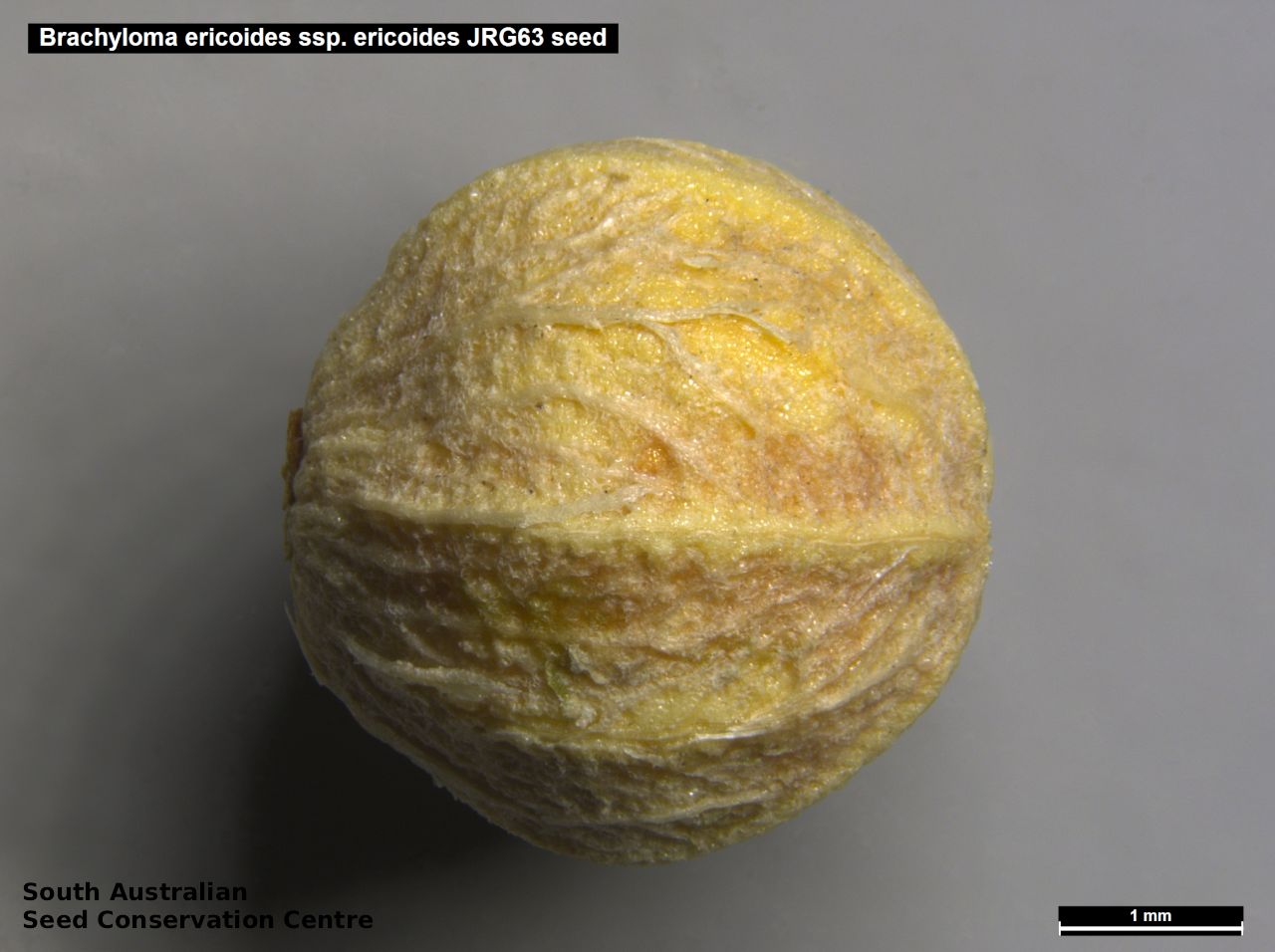





















Botanical art
Etymology
Brachyloma from the Greek 'brachys' meaning short and 'loma' meaning a fringe or edge, alluding to the hairs or scales in the throat of the corolla tube. Ericoides from Greek meaning heath-like, alluding to the species resemblance to plants in the genus Erica.
Distribution and status
Found in the southern part of South Australia, south of Nuriootpa, growing in scrub on sandy loams or sand over limestone. Also found in Victoria. Native. Common in South Australia. Common in Victoria.
Herbarium regions: Northern Lofty, Murray, Southern Lofty, South Eastern, Green Adelaide
NRM regions: Adelaide and Mount Lofty Ranges, Northern and Yorke, South Australian Murray-Darling Basin, South East
AVH map: SA distribution map (external link)
Plant description
Erect or spreading shrub to 90 cm high. Leaves linear, elliptic to obovate to 18 mm long and 1.6 mm wide both surfaces glabrous. Flowers pink, bell-shaped. Flowering between May and August. Fruits are yellowish globular fruit to 4.8 mm diameter, with a thin flesh and a woody seed. Seeds are brown elliptic woody seed to 4 mm diameter, with ridges. Seed embryo type is linear under-developed.
Seed collection and propagation
Collect seeds between September and November. Collect the fruit that are maturing, starting to turn yellowish with a hard woody seed inside. Place the fruits in a bucket of water and rub the flesh off with your hands. Drain the water and wash again if required to remove all the flesh. Then spread the wet seeds on some paper towel and leave to dry. Store the seeds with a desiccant such as dried silica beads or dry rice, in an air tight container in a cool and dry place. Seed viability is usually high. This species is generally difficult to germinate, it has morphophysiological dormancy and complex germination requirements.
| Location | No. of seeds (weight grams) | Number of plants | Date collected | Collection number Collection location | Date stored | % Viability | Storage temperature |
|---|---|---|---|---|---|---|---|
| BGA MSB | 1,200 (26.2 g) 1,050 (34.77 g) | 80 | 19-Oct-2005 | MKJ87 Southern Lofty | 1-Aug-2006 | 100% | -18°C |
Number of plants: This is the number of plants from which the seeds were collected.
Collection location: The Herbarium of South Australia's region name.
% Viability: Percentage of filled healthy seeds determined by a cut test or x-ray.